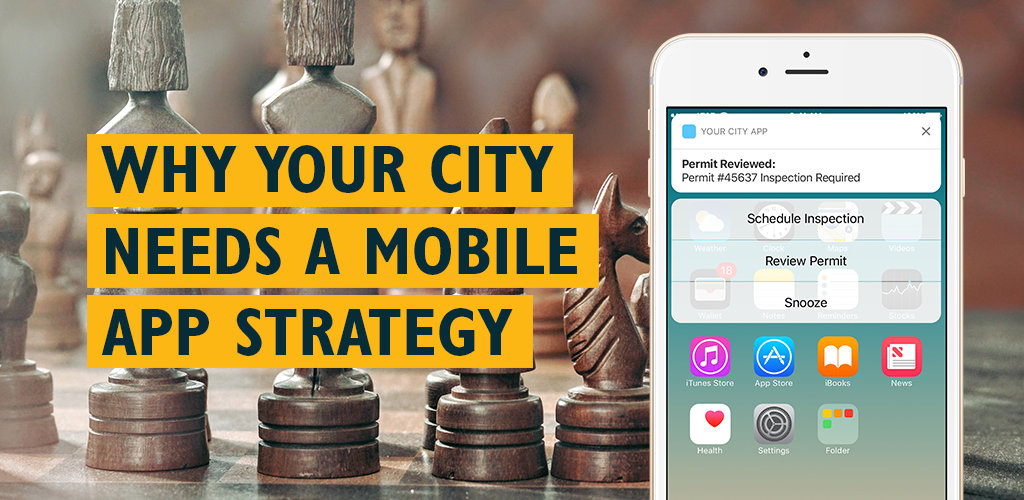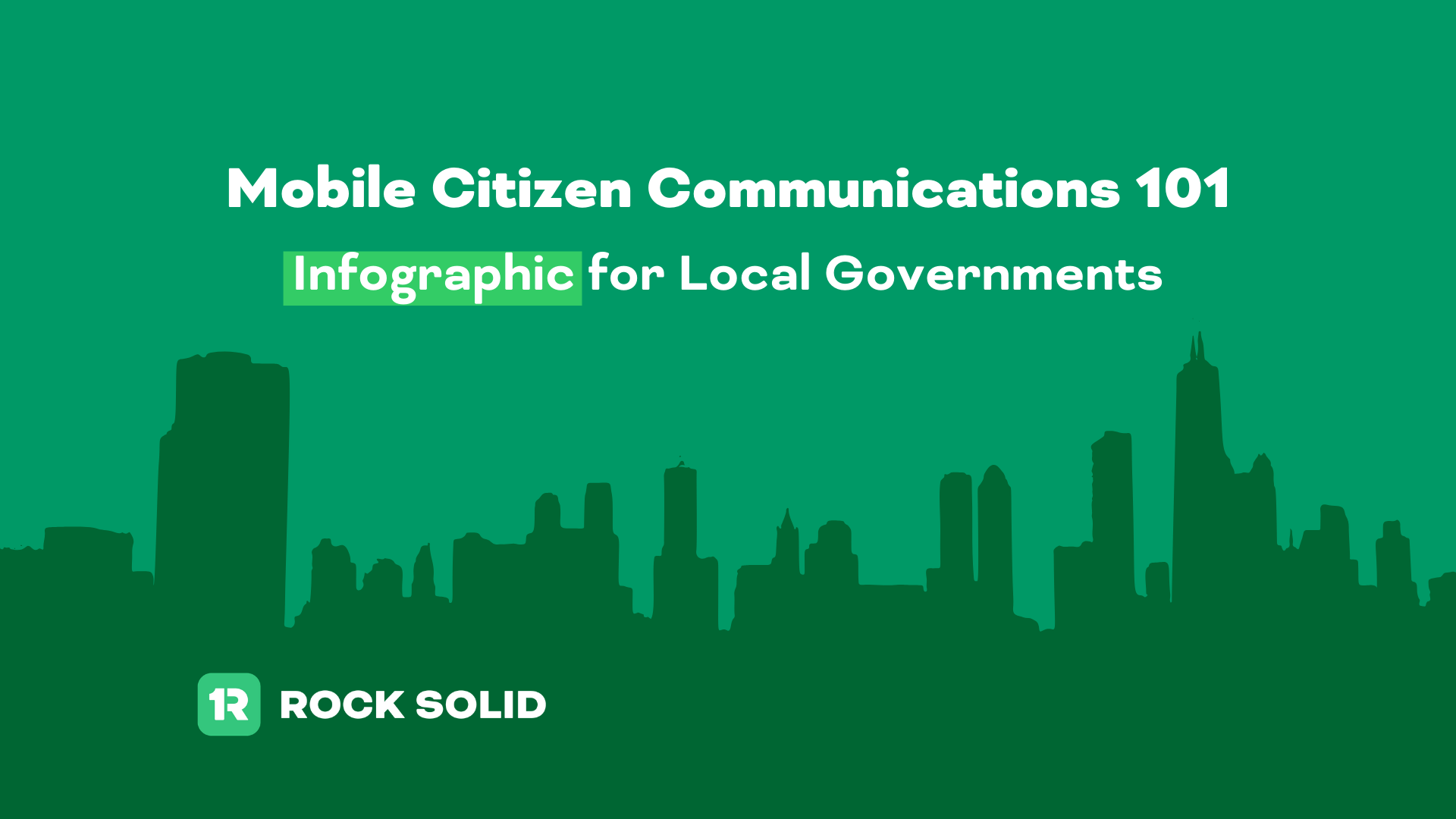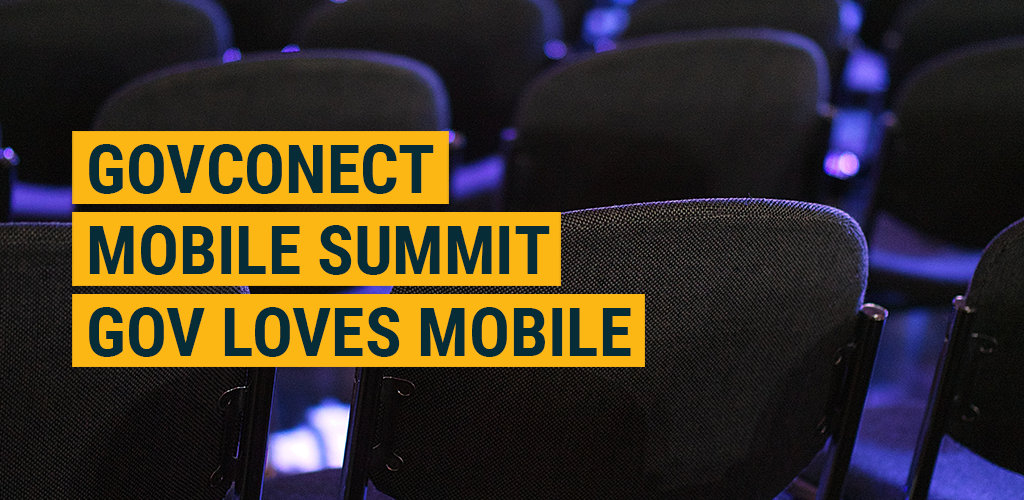The average US consumer is spending up to 5 hours per day on mobile devices, and 92% of that time is spent using an app.
Many local governments see these stats and figure that they must deploy an app to stay current with tech trends. The logic is sound, but the approach is often flawed. If you want your city to have one of the best government mobile apps, you need to start by building a mobile strategy.
Otherwise, you're building a digital future without a plan. And that only sets your organization up for headache, both for staff and residents.
Putting an End to App Sprawl
Usually, more is better. That's not the case for mobile apps for cities.
Note: Let's get something thing straight. We're not here to bash anyone, and New York City is definitely an innovator and leader in digital government services.
When it comes to New York City and their approach to mobile, unfortunately, they've entered the dreaded App Sprawl. Go to NYC.gov and you'll be met with an offering of 23 different apps for citizens to download.
That’s a lot of apps, and that’s a lot of space you need on your phone. The average resident is not going to download 23 different apps to engage with their city.
In 2015, New York City decided to enhance the digital capabilities of NYC to provide easier connections to government and community services and information. They created a 354-page strategic plan of action to help its agencies understand the expectations and actions they needed to take to improve their city’s digital capabilities. In the strategic plan, it said:
“Today, too much information is presented by individual agencies, which means residents must know the City’s organizational structure in order to discover relevant opportunities.”
And the same is true in so many cities. We see it all the time.
So the city should realize that residents aren't going to search, discover all 23 apps, and download each separately.
the dangers of Building Apps for Cities Without a Guide
Each time you decide to launch a new stand-alone mobile application, you must build it, deploy it, and market it. Each step can be done in-house or through a vendor. If you're just getting started, check out this guide to making the best city apps for details on the app development process.
By shifting away from standalone apps to a single mobile app framework, you can be agile in your approach to pushing out services via mobile. The ability to test, measure, and iterate quickly is the best approach to manage development.
If you’re not taking a leadership position toward mobile channel shift, your organization will end up with a disjointed experience for citizens and workers. But the final step--marketing--is necessary for any new citizen-facing initiative. If you choose to build new features into your existing app, you can harness that app’s existing user base.
The exact same approach happened with the web and the outcome was disastrous. In the early days of local government websites, it was common to see a free-for-all approach to creating URLs, building page layouts, and adding content. The result was messy websites that were difficult for the public to navigate.
The same path can happen for organizations lacking the necessary leadership to create a long-term mobile strategy. We hope history won't repeat itself.
Creating a Mobile Strategy
Bringing digital services to communities requires significant planning. This can be tedious if you have to go it alone. It's important to create a digital plan that includes a mobile app strategy. Here are a few important questions to cover in building a mobile strategy:
1) How should new services on mobile be considered and evaluated?
More and more services for citizens are going to be available on mobile, including those you haven't even considered today. If you don't have a framework for these ideas, then a standard process won't be followed.
2) Who has the authority to approve new services on mobile? who else needs to be involved?
Do you currently have an approval process? If not, you should think about who should be involved from a technology perspective and which business unit owners will be involved.
Collaborate with other departments within your organization, talk to citizens and understand their needs, build a platform that citizens want to use. Too often, important departments or groups are not consulted which leads to poor outcomes.
3) What is the process to build or buy new mobile functionality?
As IT moves towards more frameworks, we've entered a world where the build vs. buy decision has become more nuanced. If you purchase a framework with a Mobile CMS, it can be possible to add new functionality using internal staff expertise.
4) How will each new feature be managed?
If your city has a good mobile app, management and maintenance from a technical standpoint should be minimal. But for ongoing improvements and additions, there should be a clear delineation of duties:
- who is responsible for maintaining the technology?
- who is responsible for managing interactions with citizens?
- who is responsible for promoting the city's application?
Delivering digital services to citizens is key to your organization pushing forward in the digital transformation. Simply putting a mobile app out “because we need to” isn’t going to cut it!
How to get started
In order to deliver mobile services, local government needs to reshape the way they approach mobile citizen engagement. Creating a mobile app strategy guide should be the first step. Digital strategy is not a “set it and forget it” scenario, but a living plan to use to continually evolve.

To develop your city's mobile strategy, start with a solid understanding of the civic mobile application landscape. From the basics of smartphone usage and app development to cost breakdowns and ongoing considerations for various app creation methods, The Definitive Guide to Launching a Civic Smartphone App has your back.
Don’t wait to play catch-up. A digital, smart city provides benefits to residents, visitors, and businesses by increasing civic engagement, improving opportunities for businesses to succeed, facilitating community development, and contributing to employment opportunities and the economic health of the city.


